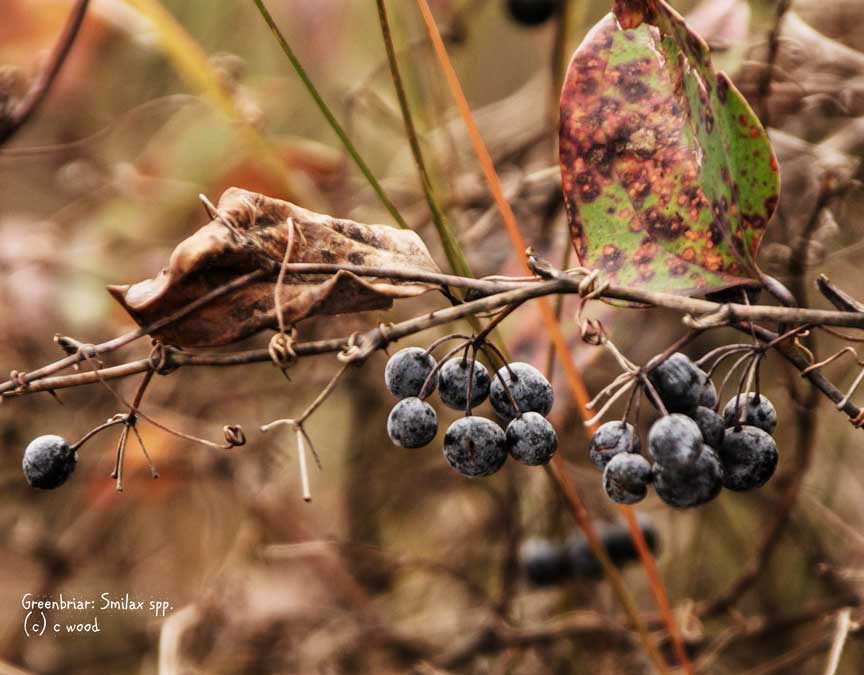Greenbrier: a Smilax kind of week
Published 2:22 pm Thursday, December 3, 2015

- Smilax fruit in late autumn.
It’s been a greenbrier (Smilax spp.) kind of week. First, I went hiking with my favorite state naturalist, and she decided to go off trail right through the densest part of a greenbrier thicket. It was just about impassable.
As soon as I would disentangle myself from one prickly vine, I would be trapped by another. Worse yet, I caught my foot in a loop of vine that I didn’t see and landed face down, right in the middle of the thicket.
Later in the week, I did some routine late fall cleanup in the garden and discovered that several greenbriers had established themselves in the azaleas. At this point, they hadn’t formed a thicket, but digging them out wasn’t easy.
Greenbriers have roots that seem to go on forever, and they’re seriously prickly, treacherous even. Even if I manage to dig out these tough plants now, they’ll be back again. Accidentally leave a piece of a rhizome in the ground and these plants win the battle for survival.
There are 11 species of Smilax in Virginia. Most of them are commonly known as greenbrier or catbrier because of the prickles or thorns along their stems and, in some cases, along the edges of their leaves.
Four, however, are known as carrion flower and don’t have prickles; they’re armed instead with a very unpleasant scent.
Although all 11 species have leaves with parallel venation, these plants are monocots and members of the lily family. Some of their closest relatives are asparagus, yucca and onions.
In April or May, greenbriers produce inconspicuous greenish white, flowers. They have leathery leaves and tough stems with tendrils or modified stems suitable for climbing.
The tendrils are thigmotropic, meaning they are sensitive to touch and will grow towards an object that touches them. With the exception of one greenbrier that has red berries, all the others have blue-black ones. The bark on the stems of greenbriers tends to remain green until the plants are mature and well established.
As much as I dislike trekking through greenbrier thickets or digging this pest out of my garden, this plant has considerable value for wildlife. It provides shelter and food for many animals. Grouse, woodpeckers, robins, and wild turkeys eat the berries during winter when other food sources are limited.
Black bears and squirrels also eat them. The leaves, stems, and shoots are the larval hosts for several species of moths and are also eaten by deer, rabbits and beavers.
Perhaps the best revenge is to wait for tender shoots and tendrils to reappear with early spring and to eat them in a salad. Who knows, maybe they’re as tasty as some foragers claim.
CYNTHIA WOOD is a master gardener who writes two columns for The Herald. Her email is cynthia.crewe23930@gmail.com.


